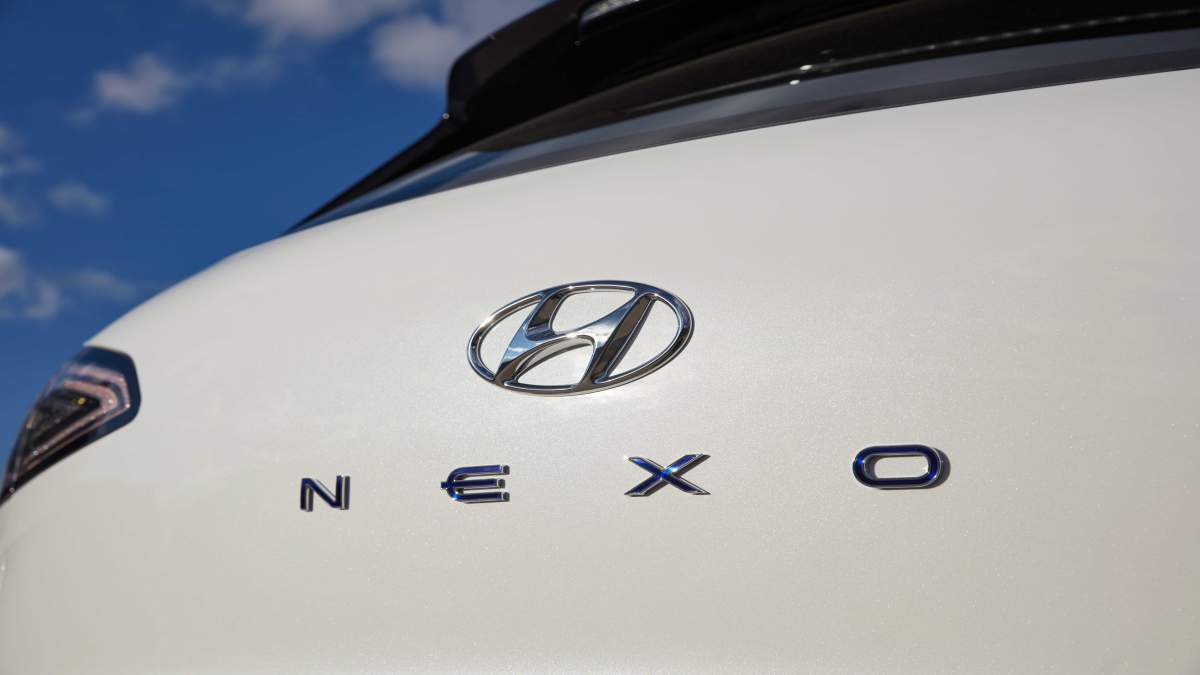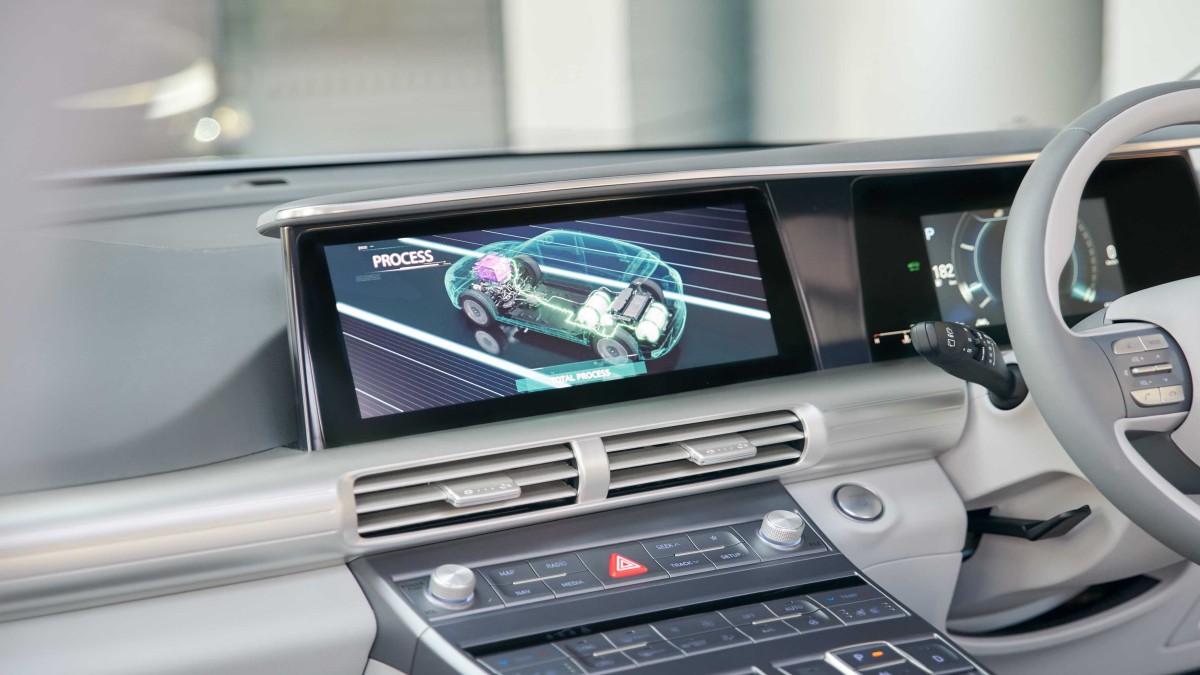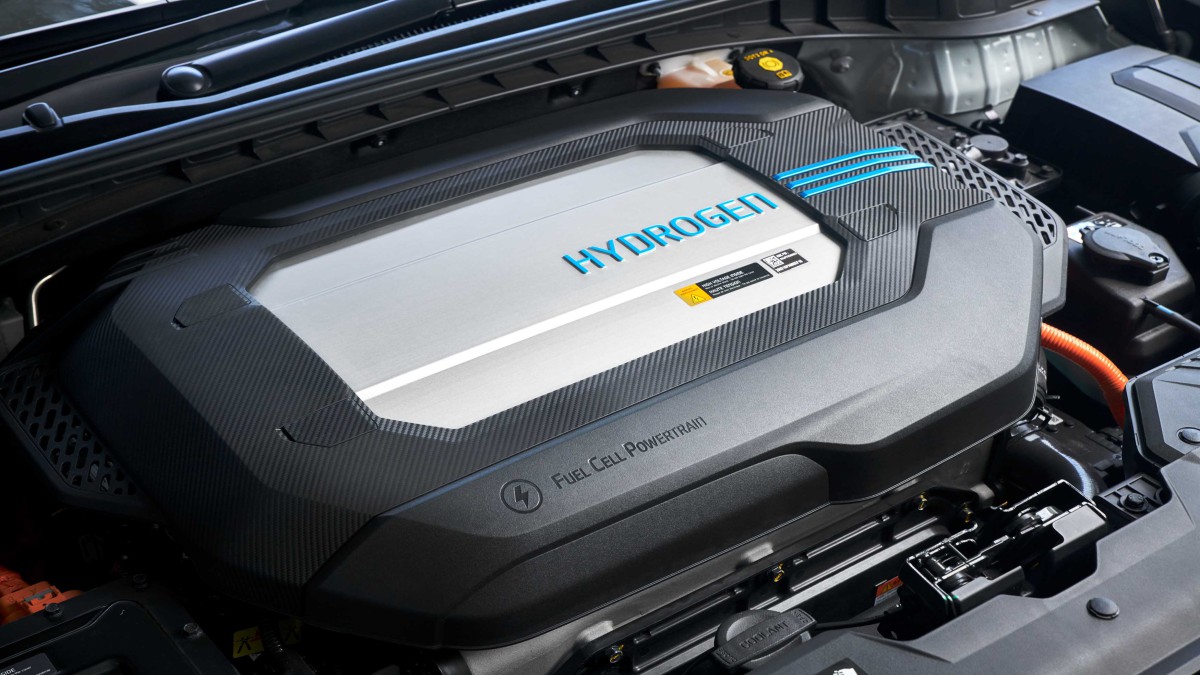The Chery Omoda E5 is the brand’s first fully electric vehicle and joins the petrol version of the Omoda 5 in Chery’s growing range of SUVs. How does one of Australia's cheapest electric SUVs stack up?
What it’s like to drive a hydrogen car

Behind the wheel of Hyundai’s hydrogen-powered Nexo SUV.
There’s something that seems very normal about pumping hydrogen into the latest release from Korean car maker Hyundai. Connect an industrial metal collar to the receiver nozzle on the Nexo, pull the trigger to lock it in place and gas starts flowing.
The trigger and collar are cool to the touch, a product of -40 degrees Celsius hydrogen pulsing through the handle, most of which is insulated. It’s more high-tech behind the scenes, as the car and bowser conduct a data exchange to establish the safest, most efficient filling pressure.
A few minutes later and the Nexo has reached its 6.33-kilogram maximum hydrogen capacity. For now, you don’t even have to pay – and you won’t be hit up to buy chips and chocolates on the way out.
If this nirvana-like take on zero-emissions motoring has you ready to sign up for a hydrogen-powered car, beware the negatives, such as where to top up. There are currently only two public hydrogen refuelling stations in Australia, one at Toyota’s Hydrogen Centre in Altona in Melbourne’s west and the one I’m using in an industrial area of Canberra, about four kilometres from Parliament House.
It was set up as part of a consortium that includes the ACT government, which is trialling the first 20 Nexos in the country. Toyota has a similar program running in Melbourne, with 20 of its Mirai hydrogen cars being evaluated by “progressive businesses and organisations”.
Toyota says it “believes hydrogen can play a central role in reducing emissions”. ACT Minister for Climate Change and Sustainability Shane Rattenbury says the Nexo trial is about testing hydrogen’s potential. “We are demonstrating … that a zero-emissions future is possible – and it’s practical in Australia.”

The Nexo's 666-kilometre claimed driving range beats all but the biggest EVs
More hydrogen stations are planned – about 10 over the next few years covering every state and territory except the Northern Territory – but Australia’s vast size means achieving anything like the drive-anywhere practicality of the circa-7000 petrol stations that dot the country is many years away.
Still, it’s that potential for motoring normality that has some nominating hydrogen as the future of clean-emissions motoring. Like battery electric vehicles, hydrogen-powered fuel cell cars produce zero CO2 emissions. But rather than waiting hours – or overnight – for batteries to recharge as with a battery electric vehicle, the refuelling process with a hydrogen-powered car is almost identical to what we have become used to with petrol and diesel-fuelled cars. And the 666-kilometre claimed range beats all but the biggest EVs.
Crucially, hydrogen fuel cell cars are not seen as an either/or, but a complement to battery electric vehicles. Many see hydrogen as a crucial piece of the zero-emissions puzzle, one that could look after heavy vehicles (trucks and buses) and the towing machines Australians love.
“Everything we see running on petrol today will more than likely be EV in the future, everything running on diesel today will more than likely be fuel cell in the future,” explains Scott Nargar, senior manager of future mobility for Hyundai, which along with Toyota is pushing hard to get hydrogen on wheels.
So what’s the Nexo like to drive?
At first blush the Nexo is very normal in a modern-SUV way. Slightly longer than your average five-seat suburban hauler, it has a suitably modern snout and recessed door handles pop out to greet you. If it weren’t for the ‘fuel cell’ badge on its rump, few would look twice.
Pop the bonnet and things also look familiar, although the chunk of metal that looks like an engine is actually the fuel cell – where hydrogen and oxygen are converted into electricity and water. High-voltage orange cables add to the electric bling.
Sitting inside the Nexo feels similar to other Hyundais, albeit with a healthy dose of trinkets – digital dashboard, a floating centre console and recycled materials.
The rear seat is higher, to accommodate a trio of hydrogen tanks beneath. Each tank is made of carbon fibre that’s about 25 millimetres thick to not only protect it in a crash, but also to handle the extreme pressure – up to 10,000psi – under which hydrogen is stored.
Up front the clean, spacious layout has everything you’d expect in a regular car, from gear selector buttons to ventilation controls and the latest connectivity. Press the start button and there’s no sound, only an awakening of screens. Selecting ‘D’ to take off engages a whirring sound, which is more obvious from outside to alert pedestrians.
There’s a single electric motor, borrowed from Hyundai’s Kona Electric, hiding under the fuel cell and it drives the front wheels. Pop the boot and where you might expect to find the spare tyre there’s a 1.56kWh battery pack instead.
The Nexo’s performance is acceptable without being startling. The electric motor produces 120kW but it’s the 395Nm of torque, or pulling power, that’s the dominant force, as it’s readily available when pressing the accelerator.
It’s tasked to shift a portly 1810-kilogram body. Tesla drivers may be underwhelmed by the 9.2 seconds it takes the Nexo to reach the benchmark 100kmh target, but anyone stepping out of a RAV4 or CX-5 will appreciate the surge of pulling power. The near-instant access to that torque also makes keeping pace with traffic that little bit easier.
As with hybrid cars there’s an energy-flow display on the central screen, showing where electricity is being drawn from or created. Call on full power and it’ll likely utilise the battery and fuel cell concurrently, while in gentler driving the battery can briefly supply the electrons. Listen carefully and you might hear some gas making its way from the tanks to the fuel cell. It’s subtle – tunes will easily drown it out – but is an endearing addition.
Not that the Nexo oozes character. There’s very little noise, the most obvious is the unwanted tyre rumble as the speedo approaches triple figures. This is a car created for practicality and comfort over driving excitement.
The suspension is soft, although 19-inch tyres can slap into a sharp-edged bump. And while it’s heavy, it’s not as grounded as a traditional EV, which places much of its weight in the floor-mounted battery pack. Instead, the Nexo leans delicately into corners.
There’s regenerative braking that can be adjusted between four levels. The most relaxed is like coasting while the most aggressive is like lightly brushing the brake pedal.
Our experience suggests hydrogen use of between 1.0 and 1.2 kilograms per 100 kilometres, which makes trips of 600-odd kilometres easily achievable.
But none of this is available to those ready to make the zero-emissions splurge. While Hyundai is targeting governments and fleets who can make use of the extremely limited refuelling infrastructure, all Nexos arriving in Australia are being leased rather than sold. There’s no word on costs, although with an estimated up-front price of around $100,000, they’ll clearly be pricier than a similarly sized Tucson.
Still, the Nexo shows the potential for hydrogen tech to play a role in the move towards zero-emissions motoring.






